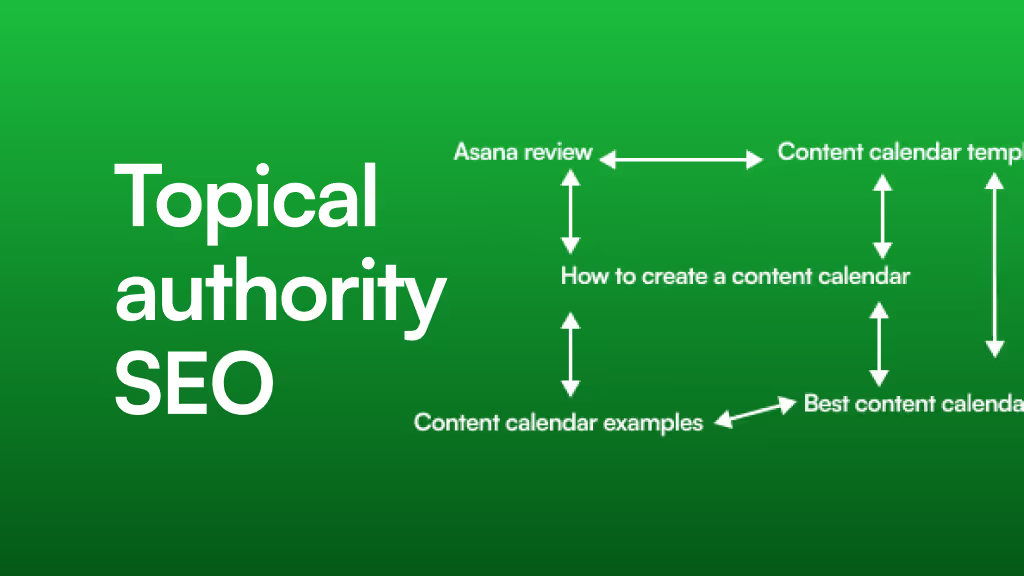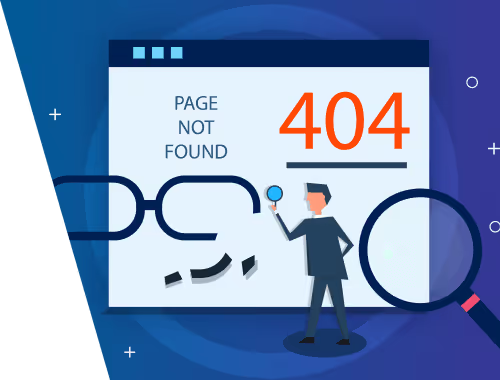Your Webflow Site is Beautiful, But Is Anyone Finding It? A Step-by-Step Content Gap Analysis
You did it. You launched a stunning, pixel-perfect website on Webflow. The animations are smooth, the layout is responsive, and the design is something you're truly proud of. There’s just one problem: the traffic report is looking a little… lonely.
It’s a common story. Many businesses focus so much on the visual design that they overlook the engine that actually drives organic traffic: strategic content. If your beautiful Webflow site feels like a masterpiece hidden in a gallery with no visitors, you're likely facing a content gap.
Think of your website as a new house. You’ve built strong walls, installed beautiful windows, and painted everything perfectly. But when a visitor opens the door, they realize there’s no kitchen. They can't get what they came for, so they leave. A content gap analysis is the process of inspecting your house, room by room, to find what essential pieces are missing so you can finally make it a home for your audience.
This guide will walk you through a comprehensive, Webflow-centric process to find those missing pieces, turning your site from a quiet gallery into a bustling hub of activity.
What is a Content Gap Analysis (and Why Your Webflow Site Needs One)?
A content gap analysis is a method for finding topics and keywords that your audience is searching for, but for which you don't have any content. It's about comparing the content you have with the content your competitors have and, most importantly, what your potential customers actually want.
For Webflow users, this process is particularly powerful. You have one of the most flexible content management systems (CMS) at your fingertips. Identifying content gaps isn't just about writing more blog posts; it's about finding opportunities to create new landing pages, build out resource hubs, or even leverage programmatic SEO all things Webflow excels at.
The goal is to stop creating content blindly and start strategically filling the holes in your customer’s journey, ensuring you have an answer for them at every stage.
The 4-Step Webflow Content Gap Analysis Process
Let's move from theory to action. This process is designed specifically for the Webflow ecosystem, focusing on tools and techniques that work seamlessly with your site.
Step 1: Conduct a Webflow-Specific Content Audit
Before you can find what's missing, you need a crystal-clear picture of what you already have. This means auditing your existing content not just by topic, but by performance.
1. Export Your Content from Webflow: Your first stop is the Webflow CMS. You can export your CMS collections (like blog posts, case studies, or services) as a CSV file. This gives you a clean list of every piece of content you've published.
2. Enrich with Performance Data: Now, open up that CSV in Google Sheets or Excel and add columns for key metrics from Google Analytics and Google Search Console:
- Organic Traffic: How many visitors does this page get from search engines?
- Top Keywords: What search queries is this page ranking for?
- Bounce Rate: Are people leaving immediately after landing on the page?
- Conversions: Is this page contributing to your goals (e.g., form submissions, demo requests)?
3. Analyze and Categorize: With all your data in one place, you can see what’s working. Is a specific category of blog posts driving all your traffic? Are your case studies getting zero views? This initial analysis will reveal your "content winners" and pages that are underperforming.
Webflow User Pitfall: Don't just audit your blog! Many businesses forget to analyze their service pages, landing pages, case studies, and other crucial content types managed within their Webflow CMS collections. Every page is a potential entry point for a user.
Step 2: Analyze Your Competitors' Winning Content
Now that you know your own strengths and weaknesses, it's time to see what's working for others. The key here is to identify your "content competitors" sites that rank for the keywords you want to target, even if they aren't direct business rivals.
You can use SEO tools like Semrush or Ahrefs for this, but you can also get surprisingly far with free methods. Simply search for your target keywords on Google and see who consistently shows up on the first page.
Once you have a list of 3-5 content competitors, analyze their sites to find out:
- What topics are they covering that you aren't?
- What formats are they using? (e.g., guides, videos, tools, case studies)
- Which of their pages get the most traffic and backlinks? (You can use a free tool like Ubersuggest to get a high-level view of this.)
Document your findings in a spreadsheet. This isn't about copying them; it's about understanding the standard of quality in your niche and identifying proven topics that resonate with your shared audience.
Step 3: Map Content to Your Customer Journey
A huge source of content gaps comes from ignoring parts of the customer journey. Your audience has different questions and needs depending on how close they are to making a decision.
Break it down into three simple stages:
- Top of Funnel (TOFU): Awareness: The user has a problem but may not know about solutions. They are asking broad questions.
- Content Example: "What is a Content Gap Analysis?" (Blog Post)
- Middle of Funnel (MOFU): Consideration: The user is aware of solutions and is now comparing them.
- Content Example: "How [Your Service] Compares to [Competitor Service]" (Comparison Page)
- Bottom of Funnel (BOFU): Decision: The user is ready to buy and needs final convincing.
- Content Example: "Customer Success Stories" (Case Study Collection in Webflow)
Look at your content audit from Step 1. Do you have content for all three stages? Most businesses are heavy on TOFU (blog posts) and BOFU (service pages) but have a massive gap in the middle the MOFU content that bridges the gap from casual reader to serious lead.
Step 4: Synthesize and Prioritize Your Opportunities
This is where it all comes together. By cross-referencing your content audit, competitor analysis, and customer journey map, you'll start to see clear opportunities emerge.
Your list of content gaps might look like this:
- Keyword Gap: "Competitor X ranks #1 for 'webflow seo checklist,' and we have no content on this."
- Topic Gap: "We have 10 blog posts about design but none about website security, a major customer concern."
- Funnel Gap: "We have no case studies (MOFU content) to show potential clients how we solve problems."
- Format Gap: "Our top competitor has a popular video series, while all of our content is text-based."
Prioritize this list based on potential impact and effort. A low-effort, high-impact idea (like updating an underperforming blog post) is a great place to start.
Advanced Strategy: Turning Gaps into Growth in Webflow
Identifying gaps is one thing; filling them effectively is another. Webflow’s powerful CMS gives you a strategic advantage.
Building Topic Clusters with Webflow's CMS
Once you identify a major topic gap, don't just write one article. Build a topic cluster. This involves creating a long, comprehensive "pillar page" on a broad topic and linking out to several smaller, more specific "cluster pages."
You can do this seamlessly in Webflow by using CMS Reference and Multi-Reference Fields. Create a "Pillar Pages" collection and a "Cluster Pages" collection. Then, link them together. This builds a powerful internal linking structure that signals your topical authority to Google.
Unlocking Programmatic SEO Opportunities
Sometimes, your analysis will reveal a gap for content at scale. For example, if you're a marketing agency, you might find people are searching for "marketing agencies in [city name]" for hundreds of different cities.
Instead of creating hundreds of pages by hand, you can use Webflow's CMS to power a programmatic SEO strategy. Create one CMS collection with all the variable data (city name, local stats, etc.) and build a single template page. Webflow will automatically generate a unique, optimized page for every item in your collection, helping you fill a massive content gap with minimal effort. This is a perfect use case for services that can help you rapidly build out new content sections.
Frequently Asked Questions (FAQ)
What are the best free tools for a Webflow user to conduct a content gap analysis?
Google Search Console and Google Analytics are your most powerful free tools. They show you exactly how your site is performing. For competitor research, you can use Google itself (with search operators like site:competitor.com "keyword") and free versions of tools like Ubersuggest or Moz Keyword Explorer.
How is this process different for a B2B SaaS vs. an e-commerce site in Webflow?
The core process is the same, but the focus changes. A B2B site might find gaps in its MOFU content, like missing comparison pages or implementation guides. An e-commerce site might discover gaps in its TOFU content, like a lack of "how-to" guides related to its products, or find opportunities for programmatic SEO on category pages.
How often should I perform a content gap analysis?
A deep, comprehensive analysis is great to do once a year or whenever you're planning a major website overhaul. However, you should incorporate a mini-analysis into your regular content planning process (e.g., quarterly) to stay on top of new trends and competitor movements.
From Analysis to Action
A content gap analysis can feel intimidating, but it's the most effective way to align your content strategy with what your audience is actually searching for. By following this Webflow-centric approach, you can move from guessing to knowing, transforming your beautiful website into a powerful engine for organic growth.
The process reveals not only what you need to create but also what you need to improve. Sometimes, the next step involves optimizing existing content. Other times, it might mean moving your content to a more flexible platform to execute on these new strategies. Regardless of the outcome, consistent ongoing content performance analysis is the key to turning insights into lasting results.




